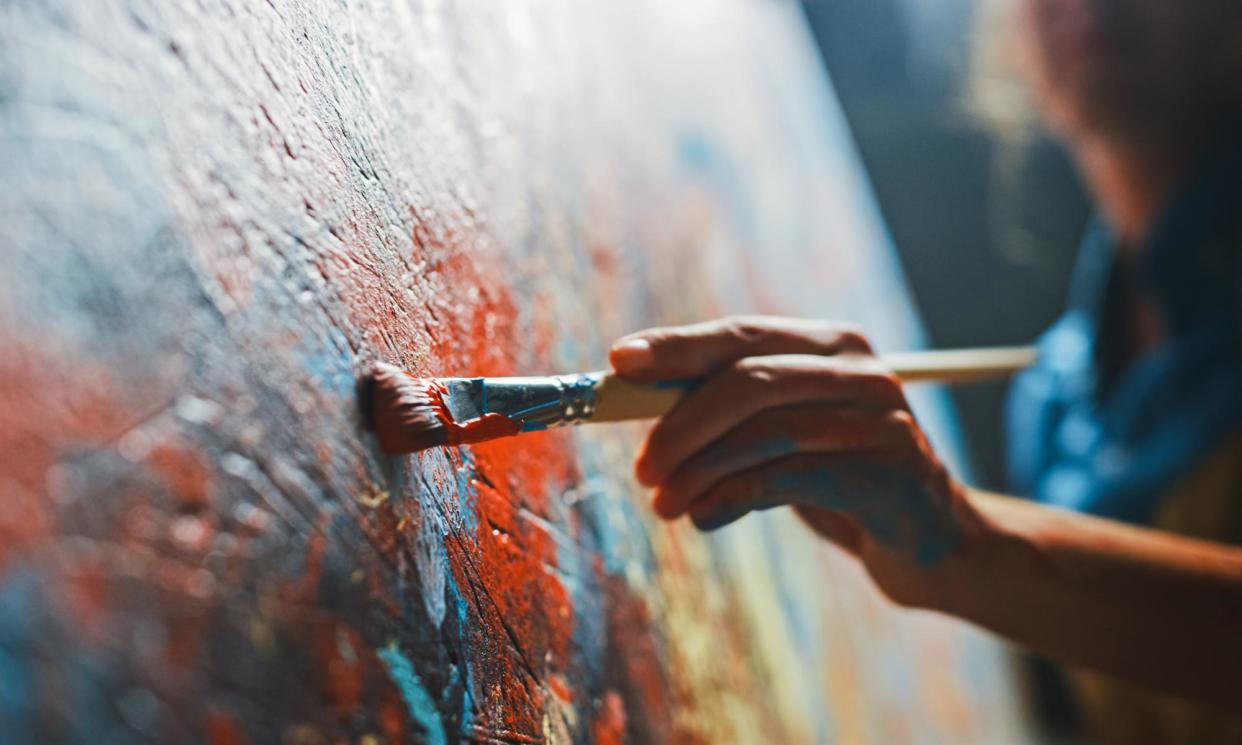Male artists overrepresented in Australian galleries and museums, research shows

Male artists continue to be overrepresented in solo exhibitions staged in state galleries, commercial galleries and major museums, according to an extensive survey released by the National Association for the Visual Arts (Nava).
The gender disparity persists despite female graduates with fine arts degrees outnumbering male graduates more than three to one over the past two decades.
More than 21,000 artists and arts workers across more than 450 institutions were captured in the 2022 Countess Report released on Tuesday. The Countess Report was last published in 2019.
The findings conclude that gender equity in the visual arts has stagnated over a four-year period and in some areas the gender gap has marginally widened.
Beneficiaries of prizes, funding, collection acquisitions, biennales and triennials, solo and group exhibitions were analysed across Australia from major museums to commercial galleries and artist-run initiatives.
The research showed women and First Nations artists received, on average, less recognition than non-First Nations men in areas considered the key indicators of career success and legitimation: solo shows, acquisitions by state institutions and commercial gallery representation.
Shows in state galleries featuring female artists stood at 33% in 2022, down from 34% in 2019 and 37% in 2016.
State galleries acquired 1,963 works by Australian artists in 2022, with 55% created by men versus 33% by women (some artists identified as non-binary; others did not declare their gender).
The founder of the survey, Elvis Richardson, said with one in five fine arts graduates today being male, their continued overrepresentation in Australia’s galleries and museums made the visual arts industry something of an outlier.
“If you look at most other industries, take nursing for example, more women study nursing, and that’s reflected in the number working in the professional sphere,” she said.
“But this is uncommon in the creative sphere … galleries are more likely to take on men, the buyers and the bigger collectors are men.
“It’s a legacy of centuries of [discrimination].”
When it came to artists identifying as Aboriginal and Torres Strait Islander, exhibition programs generally had gender parity, while in commercial galleries and university art museums, Indigenous women’s representation was actually higher than men’s. In Aboriginal-owned art centres, female artists dominated with 75%.
Related: Yayoi Kusama exhibition to bring art star’s infinity rooms and polka dots to NGV
Not all collecting institutions scored a fail when it came to closing the gender gap in 2022. The Museum of Contemporary Art, the Art Gallery of NSW and the Art Gallery of Western Australia were all recognised for their gender equity in programming.
Female artists were featured in 84% of the National Gallery of Australia’s programming in 2022.
And when it came to arts prizes, women dominated in 2022, winning 53% of prizes nationally. Nevertheless their winning purses earned an average of $44,947 compared with the average male prize of $51,818.
Nava’s executive director, Penelope Benton, said the report “offers little cause for celebration” and called for an overhaul of outdated collecting policies, many which limit the application of the Cultural Gifts Program to artists already in an institution’s collection.
“This perpetuates historical biases and reinforces existing power structures,” Benton said in a statement.
“The findings of the latest Countess Report illustrate the urgent need for policy reform within our cultural institutions. We are long overdue for a framework that fosters inclusivity, equitable investment, and governmental support for gender equity in the visual arts.”


